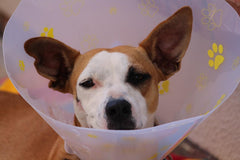
The Shiba Inu and the Akita, both breeds of Japanese hunting dogs, hail from the islands of Japan and have been considered to be noble breeds in these lands for centuries now.
They may both be a part of the same family of dogs, but there are a few important things to know about each of these breeds. Points that make the Shiba Inu very different from the Akita, as well as points that show how similar they are to one another.
Personality

The first and most important thing to know if you have other dogs or plan to have more than one, the Shiba is the breed that would be more likely to get along with other dogs that they may live with or come in contact with, The Akita isn’t an unfriendly dog, but they are not natural friends of other animals or strangers. They are incredibly protective of their human family.
The reason the Akita doesn’t generally get along so well with other dogs or cats is a result of its background of being a fighting dog with a personality that tends to be on the more aggressive side.
The Shiba, although a relative to the Akita, has a more docile personality and will likely get along better with other animals and strangers. The Shiba Inu temperament is definitely better suited for families, and homes with more than one animal.
If you live in an apartment or smaller living space, a Shiba would be better suited to such a living situation than the Akita. The Akita is an active dog that needs to have large, open areas to run around in. If you do live in an apartment, be sure to check with your landlord to see whether either of these breeds is allowed to live on the property. Because of their known aggressive nature, some apartment complexes will not allow them to live there.
Physical Attributes

The Akita is one of the larger breeds of Japanese dogs, especially when being compared to the Shiba. The Akita is taller and heavier than the Shiba Inu by nearly one foot in some cases, and heavier by a good 50lbs or so.
Both dogs have similarly shaped heads that could be compared to that of a fox, and also each has thick fur coats that are meant for the coldest of winters. Their personalities certainly differ far more than their appearances do. The Akita could easily be described as being just a larger version of the Shiba.
One other very noticeable trait that differentiates the Shiba and the Akita is drooling, or the lack thereof. The Shiba is the perfect dog for a person who can’t stand slobbery dogs. While the Akita is the exact breed that this same person will want to avoid. The Akita has been called the “king of drooling.”
Health

Generally, with any breed of dog, smaller dogs will live a few years longer than larger dogs. With that being said, it should come as no surprise that the Shiba Inu tends to have a longer lifespan than its larger counterpart the Akita.
However, the Akita does have a surprisingly long lifespan for a larger breed. If the Akita is taken care of properly and no other health problems arise, this large breed has been known to live a good 10 to 13 long and happy years.
As far as any common health conditions go for either of these breeds, they are both generally healthy for the duration of their lives. Hip dysplasia does tend to pop up as a recurring issue within these breeds, however. Canine Hip Dysplasia is a common health problem in many breeds of dogs. It is a manageable condition and sometimes is unavoidable depending on the breed.
Since nutrition is a significant factor in any dog's health, it's important to note the differences in nutritional needs between the Shiba Inu and Akita. There are no specific dietary differences between these two breeds, but it should be obvious that the Akita will be eating nearly twice as much as the Shiba Inu at each meal.
Grooming

If you and your family are in the market for a breed of dog that doesn’t shed too much, neither of these breeds might be the right choice for you and your family. The Shiba Inu and Akita are both dogs who sport a double coat of fur, meaning they will both shed moderately throughout the year.
In order to keep up with shedding, the Akita and Shiba Inu both will need brushing up to 3 times per week. If you are bringing home an Akita puppy or Shiba puppy, it's a good idea to begin grooming and brushing sooner than later so that they can be accustomed to the routine since it will be a regular occurrence throughout their lifetime.
Conclusion
The Shiba Inu and the Akita are both wonderful breeds of dogs with their own personality traits and physical features that are unique to each as a breed. The Akita is a giant compared to the tiny Shiba, but don’t let that fool you. The Shiba has a big personality in their tiny body.
The Akita won’t make the best choice for a family dog but may for someone who is living alone and wants the protection of a fierce and loving dog. The Shiba, on the other hand, may just fit perfectly into your family and home. All in all, both breeds make great pets under the right conditions.




